|
28th January
Maidens
There
was cold, miserable weather
throughout Central Scotland, the only glimmer of hope was a possibility
that it would clear from the southwest by midday. The decision was
taken then, head south down the M77, past Ayr if necessary, until the
rain stopped. This we did, stopping off at Asda in Kilmarnock, for a
very nice breakfast ( 9.5/10 ), and it was with some relief that, by
the time
we had reached the lovely fishing village of Maidens,the rain was off
and the clouds were whitening. Good plan. Maidens is just north
of Turnberry Golf Course, now famously owned by the world’s
most powerful human being, Donald Trump. The village is steeped in history. In
1307 it was the landing place of Robert the Bruce on his return from exile in
Ireland prior to the War of Independence that would result in him ruling the
new Scottish nation for 23 years. Another interesting figure with links to the
area was Scotland’s national bard, Robert Burns. One of his most famous poems,
Tam o’ Shanter, was set on Shanter Farm just north of Maidens. As we alighted from the car we
found the light was poor and the tide was low and a host of birds were
feeding in the sands of the Harbour. About a dozen Shelduck were
preening and posturing. The ever-present Redshanks were there foraging
in large numbers. John then pointed out that there were a half dozen or
so Pale-bellied Brent Geese present, close to the Shelducks.
Shelduck
|
Redshank
|
Shelduck
|
Pale - bellied Brent Goose
|
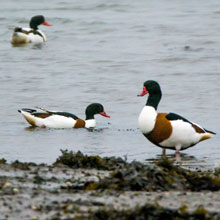
|
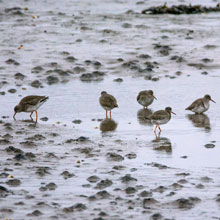
|
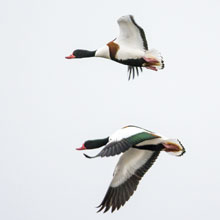
|
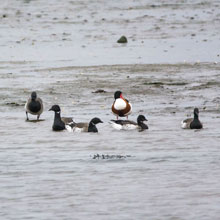
|
A beautiful Mute Swan swam in,
probably expecting bread. We then noticed a lone Curlew behind us on
the grass that surrounds the car park and playground. It flew off when
we turned, which gave me a chance to get a nice flight shot (see
Pictures of the Week). As we edged along the north side of the Harbour,
the Brents got nervous and took off over our heads for the adjacent
sands of Maidenhead Bay – another photo-opportunity! Other flight shots
were of a Great Black-backed Gull and ....
Mute Swan
|
Curlew
|
Pale - bellied Brent Goose |
Great Black - backed Gull
|
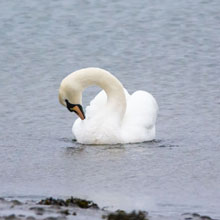
|

|
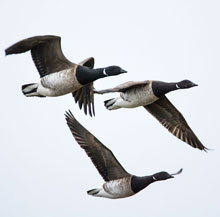
|
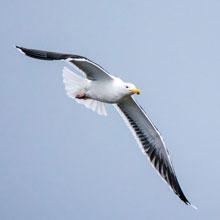
|
....
a Herring Gull. I then
spotted four Red-breasted Mergansers in the Harbour, where the Brent’s
had been. They too toddled off as we showed them some attention. It was
a shame we had no cover as our presence seemed to have been clearing
the birds from the Harbour. The Dunlins were more tolerant though as
the large flock had all their attentions on their search for insects,
snakes and worms. In the shallows of the Harbour a Little Grebe, or
Dabchick, was diving for small fish or larvae. They are more common
on inland waters but often can be found in coastal areas during winter.
Herring Gull
|
Red - breasted Merganser
|
Dunlin
|
Little Grebe
|
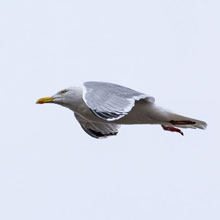
|
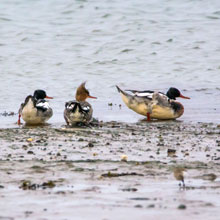
|
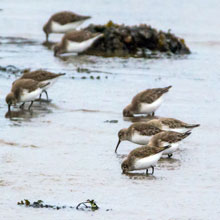
|
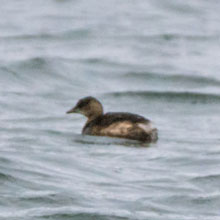
|
As we cautiously picked our way
across the rocks, a pair of familiar, fast moving birds flew in. Their
high-pitched, “weeest” flight calls and their jizz told us they were
Rock Pipits. On the sands beyond the rocks were a small flock of
scurrying Ringed Plovers – however we soon spooked them too! Further
north of these we spotted the Brent Geese but a dog put them up and
provided yet another chance to snap them in flight. One of the many
Cormorants from the surrounding area flew over the Harbour just as we
decided to walk out onto the harbour wall.
Rock Pipit
|
Ringed Plover
|
Pale - bellied Brent Goose |
Cormorant
|
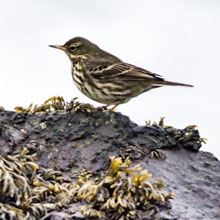
|
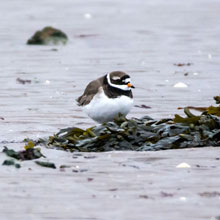
|
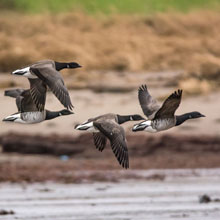
|
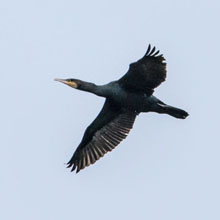
|
As we walked back around the
Harbour there were very many noisy Oystercatchers probing the grass
searching for worms. Needless to say we upset their peace too! More
flight shots! Also on the grass were some of the Brent Geese cautiously
watching us. As the weather improved, more humans were out walking so I
was glad we weren’t the only ones annoying the birdlife. As we reached
the wall the Mute Swan sailed over to us again. Sad to report we didn’t
see much from the wall, a single distant Eider was our only picture.
Oystercatcher
|
Pale - bellied Brent Goose |
Mute Swan
|
Eider
|
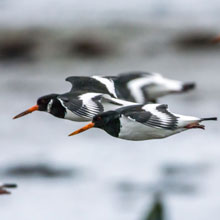
|
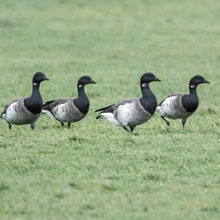
|
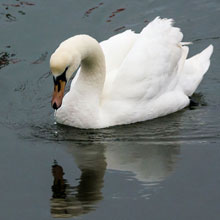
|
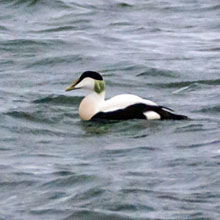
|
Although the quality of our
pictures was relatively poor due to the poor lighting conditions, we
sipped our teas and munched our cinnamon whorl Danish pastries
satisfied that we’d got any pictures at all, given that everywhere
north and east of Maidens had been drenched with rain. Maybe we’ll
catch the Sun next week?
Pictures of the Week:
Shelduck
|
Curlew
|
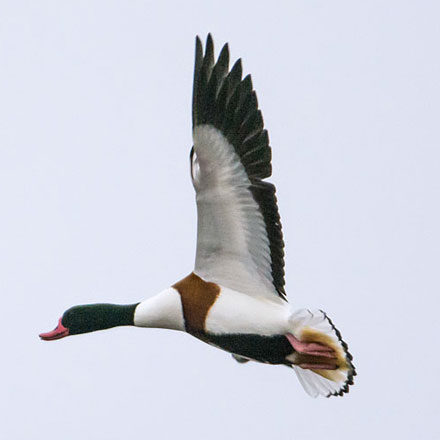
|
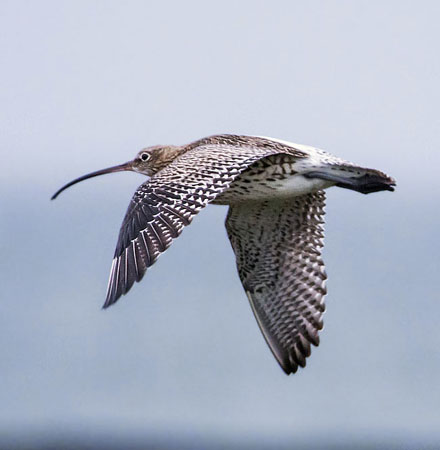
|
Pale - bellied Brent Goose
|
Rock Pipit
|
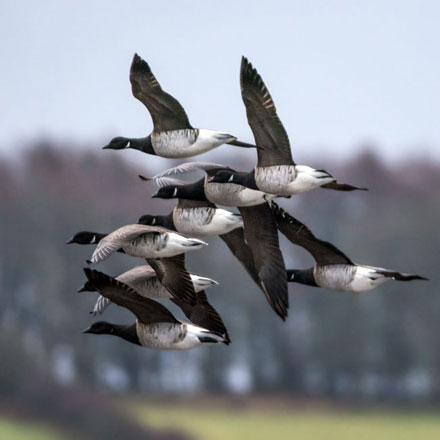
|
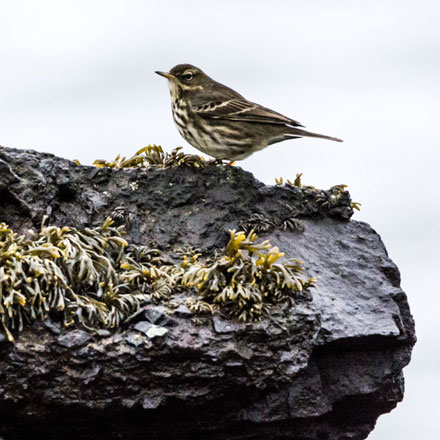
|
21st January 2018
Musselburgh
With snowy, rainy and overcast
conditions
forecast for the west we drove east to Musselburgh with a sense of
jeopardy as we were taking a chance on the return journey being
possible. Through the week the M8 had been blocked by snow at Harthill.
But it was Sunday so traffic was lighter and the warning was yellow
rather than amber so it was a calculated risk. Breakfast in Dalkeith Morrisons
was excellent
as usual (9.5/10: 1/2 off for asymmetrical toast). When we arrived at
the mouth of the Esk the light was fading as heavy clouds moved in, but
I started photographing straight away. Tide was low and Goldeneye,
Mallard, Wigeon and Oystercatchers were feeding on the Esk.
Goldeneye
|
Mallard
|
Wigeon
|
Oystercatcher
|
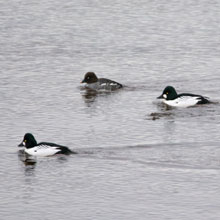
|
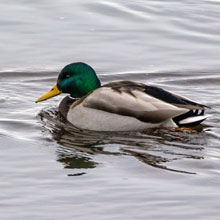
|
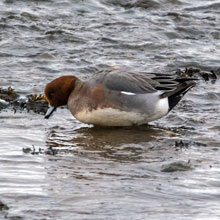
|
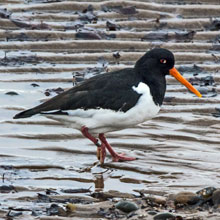
|
As we walked east towards the
Scrapes we came upon a pair of Bar-tailed Godwits vigorously probing
the sand for vegetation, invertebrates and crustaceans. With their
heads almost fully submerged beneath the surface they emerged, more
often than not, with juicy morsels. A bit further round the coast a
small group of Velvet Scoters were diving. Their diets consists mainly
of shellfish, crabs, sea urchins, fish, insect larvae and plants. A
solitary Slavonian Grebe accompanied the Scoters – understandable as
they have a similar diet.
As I panned the camera following a
flock of Turnstone in flight, John directed my attention to a
newly-surfaced Cormorant just below the sea wall. It gave me a worried
look before disappearing below the surface only to resurface 30m
offshore. I did though manage to get a good clear shot when it was
close. Almost invisible in the worsening light, about 50m offshore, a
Long-tailed Duck was diving, typically, for molluscs, crustaceans and
some small fish. Not far from him an Eider was also diving for similar
foods. Its favourite nibble are mussels, so it was in the right place –
well, it’s not called Musselburgh for nothing!
Turnstone
|
Cormorant
|
Long - tailed Duck
|
Eider
|
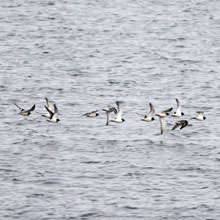
|
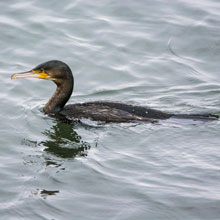
|
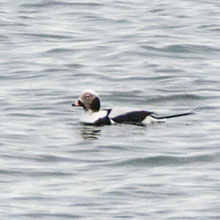
|
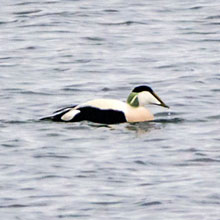
|
On the sea adjacent to the Scrapes
we were disappointed to see large flocks of Wigeon and Teal because
this meant the Scrapes were probably iced over and so would be bereft
of birds. And it was! The nearby Boating Pond too had ice on its
surface. Only the feeding motions of a pair of Mute Swans kept it from
completely icing over as they searched for water plants, molluscs, and
invertebrates. A single, lost-looking 1st winter Black-headed Gull was
standing on the ice, probably waiting for some kind humans to feed them
with chunks of bread.
Wigeon
|
Teal
|
Mute Swan
|
1st Cycle Black - headed Gull
|
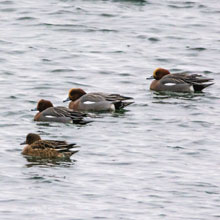
|
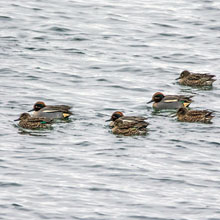
|
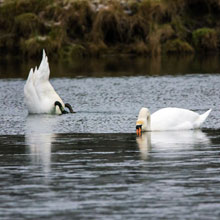
|
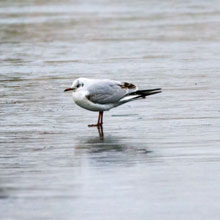
|
At this point we noticed that we
couldn’t see Edinburgh as snow moved in from the west. It was time to
make our way back to the car. Across the Forth Kirkcaldy was in
brightness but it too was soon to engulfed by snow. At the Esk, as I
photographed another 1st cycle Black-headed Gull, I thought a pair of
Bar-tailed Godwits had started fighting but it quickly became apparent
they were copulating. It was all rather violent but seemed to end with
caring, submissive postures.
By this time it was snowing quite
heavily so we drove a couple of hundred metres upstream to view the
birds there. I took pictures from the car of a courting Goldeneye.
Several males surrounded each female and basically harassed her while
throwing their heads back onto their tails! Occasionally a female
performed a head throw but always with less vigour. As the snow
subsided I went a short walk along the bank and photographed a few nice
sights. First of these was a mature, winter plumage Herring Gull.
There were a fair few Canada Geese
foraging on the now snow covered grassy banks. On the river a Duclair
Duck drifted past carrying flakes of snow while Goosanders darted
frantically towards bread-yielding dog walkers. My final capture was a
close-up of a Canada Goose that was taking a rest from scoffing some
seed provided by a nice wee lad.
Canada Goose
|
Duclair Duck
|
Goosander
|
Canada Goose
|
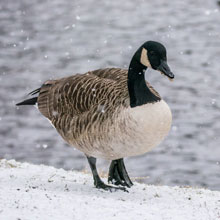
|
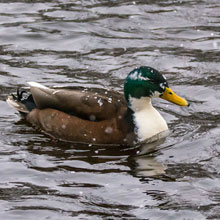
|
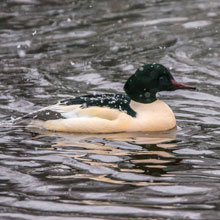
|
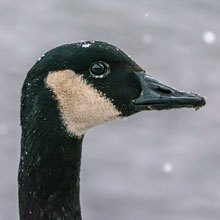
|
It
had been a “game of two halves”
- pictures from along the sea wall, then pictures in the snow from the
river bank. The light was poor but the birds were very active. We
finished it all off, as is our custom, with tea and apple caramel
Danish pastries. Then it was down the M8 in double quick time - there
were far fewer cars on the road than normal due to the news media's
over-cautious predictions ( not for the first time during the recent
cold spell) Better safe than sorry?
Pictures of the week:
Bar - tailed Godwit
|
Cormorant
|
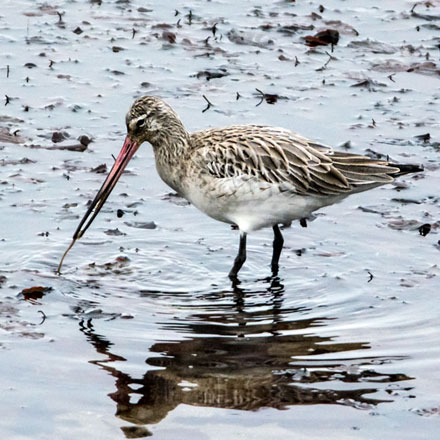
|
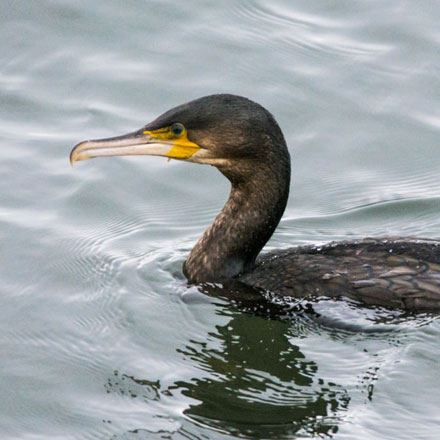
|
| Bar - tailed Godwit |
Goldeneye
|
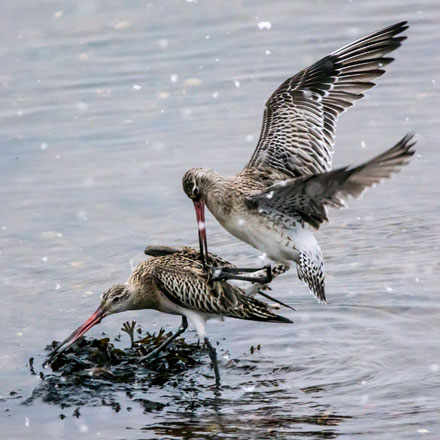
|
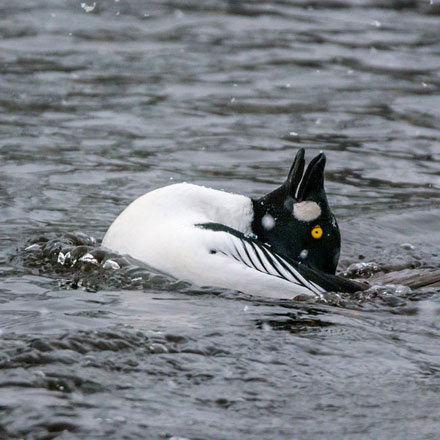
|
14th January 2018
Aberlady LNR
Reports of the return of the Long-eared Owl at Aberlady drew us east
once more. The weather forecast was encouraging. It was to be cloudy
with sunny intervals and low probability of rain. So after a hearty
breakfast in Dalkeith Morrisons (9.5/10) we sped up the A198 to
Longniddry, then along the coast to Aberlady Local Nature Reserve. We
had a dull start though, but as we crossed the footbridge we managed to
see a group of Teal and a Curlew feeding at the mouth of the Peffer
Burn. As we reached the end of the bridge the sun broke through,
illuminating a Carrion Crow foraging in the long grass. Just before the
path passed through the dense thicket of Sea Buckthorn a kind birder
pointed out a Peregrine Falcon sitting a couple of hundred metres away
near the shore. Perhaps it was eating some unfortunate prey.
Teal
|
Curlew
|
Carrion Crow
|
Peregrine Falcon
|
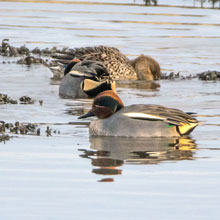
|

|
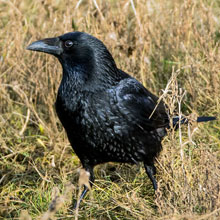
|
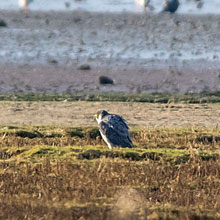
|
As we snapped the Falcon we became aware that there were lots of
Fieldfares feeding on the orange Sea Buckthorn berries. John thought
he’d read that these berries, ‘hippophae rhamnoides’, were rich in
alcohol when ripe. Maybe that explains their excited behaviour! However
when I researched the Sea Buckthorn berry I could see no mention of
alcohol but apparently the berries are very oily and very rich in
vitamin C, so they’re a rich energy source for birds. When we reached Marl
Loch,
where the Long-eared Owl had been seen, more Fieldfares were very
evident as hordes of them were arriving onto the berry-rich bushes,
settling only for a short time and then fleeing nervously. We used my
spotting scope to scan the lochside for the owl, but to no avail. It
hadn’t been seen that day. Undeterred, we moved further into the
reserve. Out into the Firth of Forth we could see a very imposing sea
vessel that we researched later in the pub and concluded it was a jack
up rig ship. Exactly what it was up to, we don’t know. Maybe the
passing Herring Gull could’ve told us! We eventually reached yet more
Sea Buckthorn and, yes, you may have guessed, even more Fieldfares
gorging themselves on the juicy berries! This time we got much closer
views to these very flighty subjects.
We pressed on further along the
footpath towards the dunes and soon were surprised by a wee male Reed
Bunting that flew in, settled on a low bush and posed long enough for me
to get some good shots. We then struggled over the dunes onto the
beautiful beach. The tide was in and I headed immediately towards some
waders I’d spotted to the south. They were Sanderling rather comically
scurrying along the edge of the shore. The ever-present Oystercatchers
and Common Gulls were also feeding there.
Reed Bunting
|
Sanderling
|
Oystercatcher
|
Common Gull
|
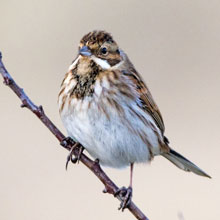
|
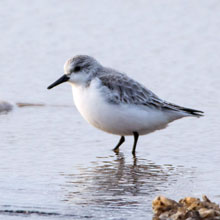
|
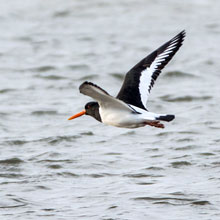
|
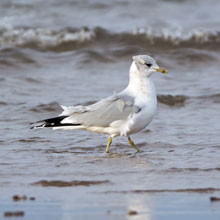 |
Further round we met another small
flock of Sanderling probing a small area of the beach seemingly unaware
we were there. The light was fading as the clouds rolled in but as we
left the beach I captured a picture of a Knot, one of quite a large
flock. We then plodded back to the car, and as we passed back over the
footbridge we again came across Curlew and Teal, sadly in very poor
light.
Sanderling
|
Knot
|
Curlew
|
Teal
|
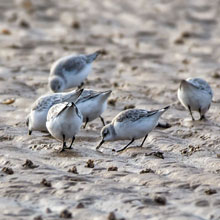
|
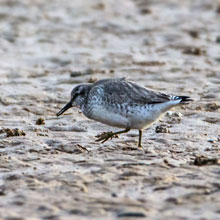
|
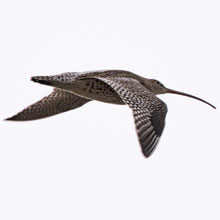
|
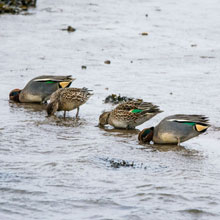 |
At the car it was tea and
chocolate eclairs before driving back home. Although we failed to catch
a glimpse of the Long-eared Owl the outing had been a success as it had
been very enjoyable and we left with pictures of some lovely birds.
Pictures of the week:
Carrion Crow
|
Fieldfare
|
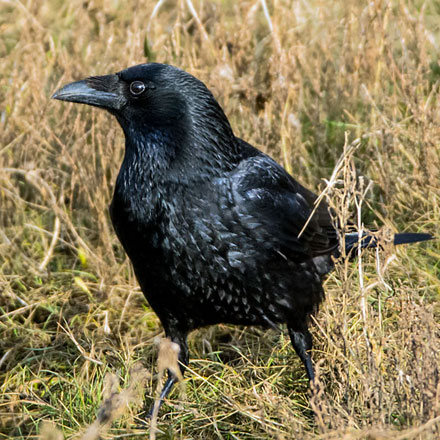
|
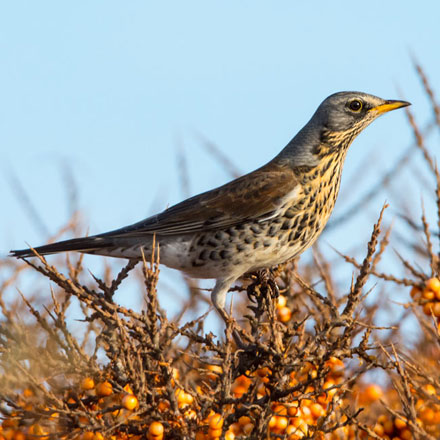
|
Reed Bunting
|
Sanderling
|
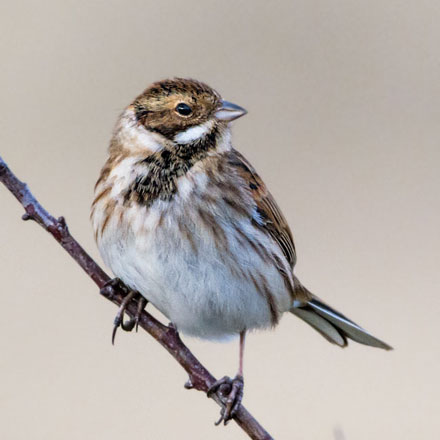
|
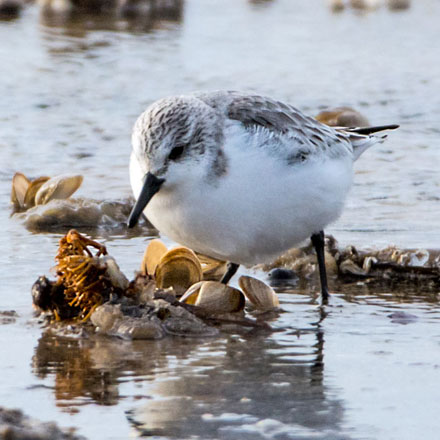
|
7th January 2018
Musselburgh
With festive celebrations behind
us we were on the road again heading merrily east to Musselburgh. The
weatherman assured us that we’d experience bright but cold conditions
and he wasn’t wrong. So after our customary Dalkeith Morrisons
breakfast (9.5/10) we nipped over to the mouth of the Esk where we
found the tide was well out but there seemed to be sufficient birds to
keep us interested. Our first shots were of some well lit Mute Swans and
Mallards by the east bank of the river. A little further along, a
Bar-tailed Godwit was vigorously drilling into the sand using its long
sharp bill that was evolved precisely for that purpose. All the time
there were birds passing, among them were a fair number of Goldeneye
flying upstream.
Mute Swan
|
Mallard
|
Bar - tailed Godwit
|
Goldeneye
|
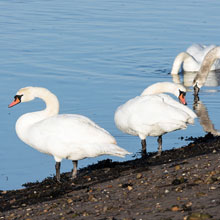
|
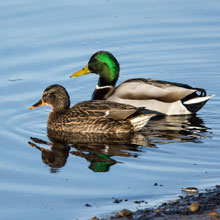
|
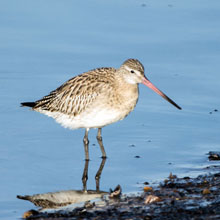
|
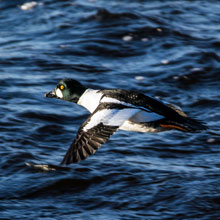 |
Other flypasts included the ubiquitous Black-headed (unphotographed),
Common and Herring Gulls as well as Carrion Crows searching for
shellfish and occasionally dropping them from on high, presumably to
encourage the occupants of the shells to leave their shells - only to
be gobbled up. Below the seawall a solitary Curlew used its long curved
beak to forage for invertebrates buried in the sand.
Common Gull
|
Herring Gull
|
Carrion Crow
|
Curlew
|
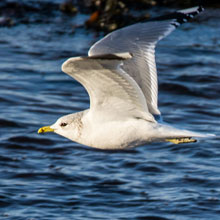
|
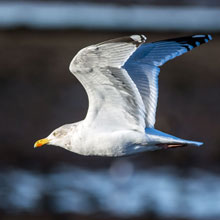
|
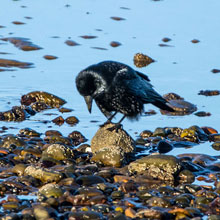
|
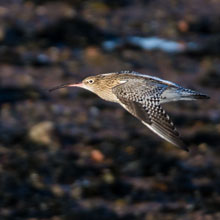 |
Seeking out birds is often done with the ears before eyes. In the trees
by the path I heard a group of Linnets resting in the lovely sunlight.
Their “chichichi-chit” calls were very distinct from the other
birdcalls. The equally familiar calls of Oystercatchers (“kleeep, kwik,
or k-peep”) and Redshanks (“tuleeu-tuleeu-tuleeu”) attracted my
attention back over the seawall. Another familiar sound, that of
of a Meadow Pipit (“seep, seep or swip, swip, swip”) allowed me to
locate it and capture its image as it explored the grassy verges of the
path.
Linnet
|
Oystercatcher
|
Redshank
|
Meadow Pipit
|
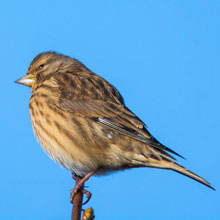
|
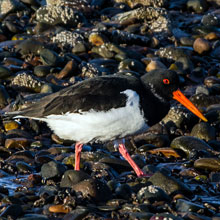
|
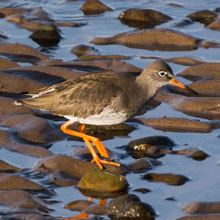
|
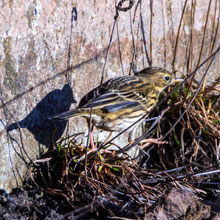
|
As I followed the Pipit I heard a
Reed Bunting calling from a distant bush - “seeoo”. I edged my way
towards it but it was spooked by a passing cyclists before I could get
as close as I would have liked. About 80m offshore I spotted a flock of
Ringed Plovers as they sped westwards over a pair of Velvet Scoters
diving. Before too long one of the Scoters also flew west. As I
photographed it, a pair of Reed Buntings flew onto the seawall, settling
only metres from where we were standing - a great opportunity to
capture pictures of these bonny birds.
Female Reed Bunting
|
Ringed Plover
|
Velvet Scoter
|
Reed Bunting
|
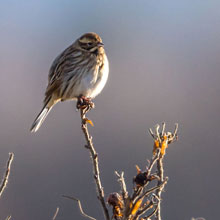
|
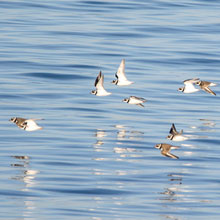
|
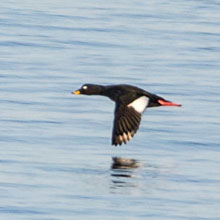
|
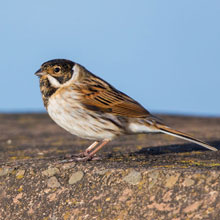 |
On the sea, spread over a couple of hundred metres adjacent to the
Scrapes, we came upon at least a couple of hundred roosting Wigeon. I
guessed that the Scrapes were iced-over as I would have expected the
birds to have settled there instead of on the sea. As we walked over to
the entrance of the Reserve I spotted a female Kestrel sitting atop one
of the trees. It posed rather obligingly before flitting off a bit
beyond our view. At the hides we were presented with a deserted, icy
panorama. Only a couple Magpies braved the Arctic conditions. Later, a
few groups of Wigeon swooped over the frozen ponds, intending to
land, but changing their minds at the last minute before heading back
over the seawall to the relative safety of the sea.
Wigeon
|
Kestrel
|
Magpie
|
Wigeon |
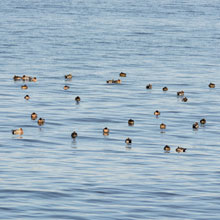
|
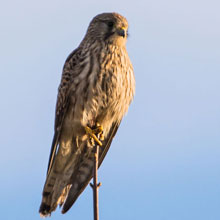
|
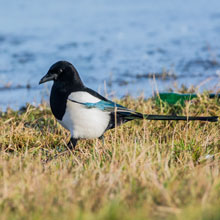
|
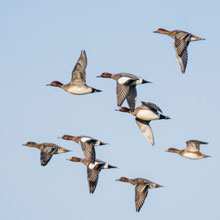 |
On leaving the Scrapes we found
the Boating Pond held quite a few Wigeon, all bathed in the low, amber
winter light. On the return journey we noted that the Velvet Scoter was a lot closer to the wall, allowing us
to see a bit more detail. As we approached the mouth of the Esk we
found several Turnstones doing exactly as you would expect from their names,
and at the very end of our walk as we reached the car I got pictures of
another Curlew as it slowly made its way upstream into the rays of the
setting sun.
Female Wigeon
|
Velvet Scoter
|
Turnstone
|
Curlew
|
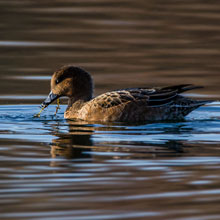 |
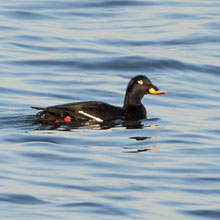
|
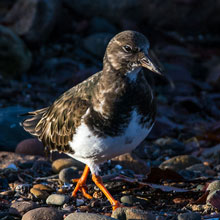
|
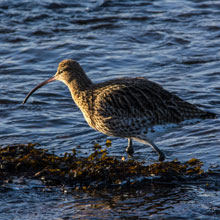
|
On reaching the car it was time
for our tea and Danish pastries. It was John’s first post-walk tea for a
few weeks and the caramel crown Danish pastries were delicious, made all the more enjoyable having had made a
fairly successful circuit of one of our favourite locations.
Pictures of the Week:
Carrion Crow
|
Female Reed Bunting
|
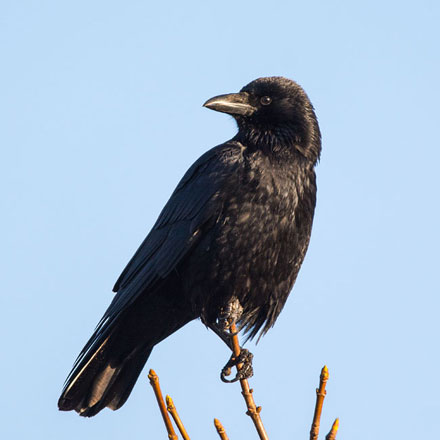
|

|
Kestrel
|
Wigeon
|
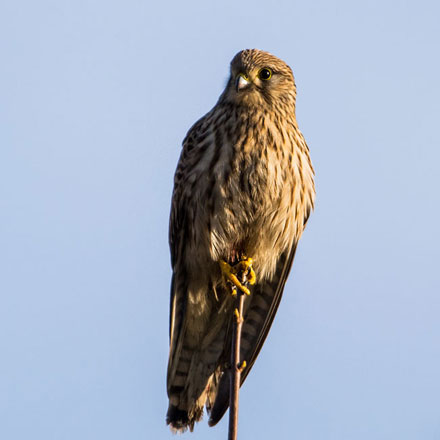
|
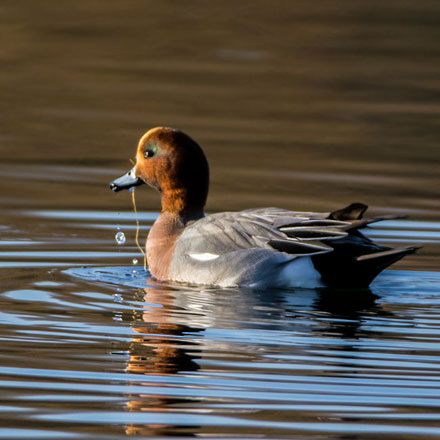
|
Back To Top
|

